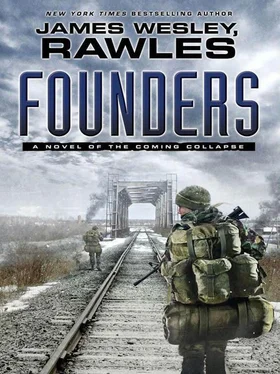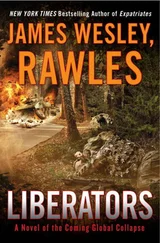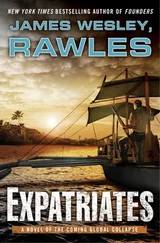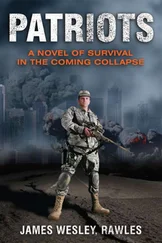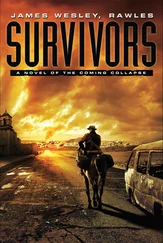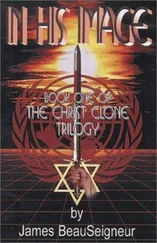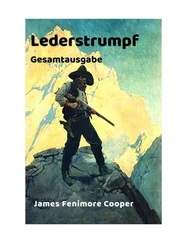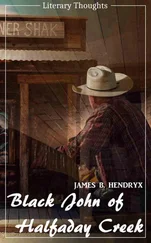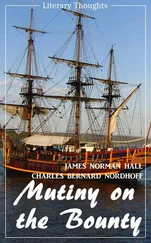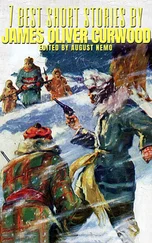James Rawles - Founders
Здесь есть возможность читать онлайн «James Rawles - Founders» весь текст электронной книги совершенно бесплатно (целиком полную версию без сокращений). В некоторых случаях можно слушать аудио, скачать через торрент в формате fb2 и присутствует краткое содержание. Город: New York, Год выпуска: 2012, ISBN: 2012, Издательство: Emily Bestler Books, Жанр: sf_postapocalyptic, на английском языке. Описание произведения, (предисловие) а так же отзывы посетителей доступны на портале библиотеки ЛибКат.
- Название:Founders
- Автор:
- Издательство:Emily Bestler Books
- Жанр:
- Год:2012
- Город:New York
- ISBN:978-1-4391-7282-7
- Рейтинг книги:5 / 5. Голосов: 1
-
Избранное:Добавить в избранное
- Отзывы:
-
Ваша оценка:
- 100
- 1
- 2
- 3
- 4
- 5
Founders: краткое содержание, описание и аннотация
Предлагаем к чтению аннотацию, описание, краткое содержание или предисловие (зависит от того, что написал сам автор книги «Founders»). Если вы не нашли необходимую информацию о книге — напишите в комментариях, мы постараемся отыскать её.
Founders — читать онлайн бесплатно полную книгу (весь текст) целиком
Ниже представлен текст книги, разбитый по страницам. Система сохранения места последней прочитанной страницы, позволяет с удобством читать онлайн бесплатно книгу «Founders», без необходимости каждый раз заново искать на чём Вы остановились. Поставьте закладку, и сможете в любой момент перейти на страницу, на которой закончили чтение.
Интервал:
Закладка:
The beauty of leaderless resistance was that the small cells were difficult to identify, locate, or penetrate. This frustrated the Hutchings government, which had hoped for a quick solution to the guerrilla war. The lack of a hierarchical structure made it impossible to neutralize the groups. For years, the U.S. Army had emphasized social network analysis and organizational-level analysis, as taught in the joint Army/Marine Corps Counterinsurgency Field Manual. The FM 3-24 doctrine and elaborate matrixes and time-event charts were of no value when resistance was leaderless and fought primarily by small cells that intentionally set no patterns.
As part of their subterfuge, many of the resistance groups had fictitious leaders. Often they had elaborate mythologies that were sometimes so believable that they had ProvGov agents busy for weeks, chasing ghosts. For example, in Arizona, the myth of “Conrad Peters” was developed, based on the name of a real-life individual from Scottsdale who had actually left the country to do missionary work in Mexico just before the Crunch. But according to the mythology, “Peters” led a group that hid out in the Superstition Mountains east of Phoenix. In New Mexico, “The Paulson Project” supposedly had a secret arms factory in Albuquerque. There was none. In Texas, to supplement three genuine companies there were nine ghost companies of Republic of Texas militia that spread tales of fictitious troop movements throughout the state and even across the Mexican border. In Wyoming, “Colonel Reed” reputedly led the Free State Irregulars. In Utah, there were regular sightings of the enigmatic “Roger Williams,” who supposedly led four sabotage teams. None of these individuals ever existed. Closer to the seat of the ProvGov, the Alvin York “Brigade” was in actuality just sixteen men and women.
Actions by other groups operating from a distance were often attributed to the fictitious groups, to sidetrack pursuing ProvGov agents and maneuver units. GPS coordinates of disused camps deep inside BLM and National Forest lands were often leaked, just to get the ProvGov to go investigate. Sometimes, these ruses would include raids on lightly manned garrisons, after their units were confirmed to have departed in search of the phantoms.
Waterville, Vermont
August, the Second Year
A tip from a confidential informant had pinpointed the house as the hideout of a resistance cell. Arriving before dawn, a French forward observer team in civilian clothes carried a tripod-mounted AN/PED-1 lightweight laser designator rangefinder (LLDR) to a hilltop. They had it set up just as the daylight was broadening and they could make out the house below. Looking through the LLDR, the team leader thumbed the designator’s laser beam on and walked the pip on top of the house that matched the GPS coordinates, distance from the hilltop, and the description from his briefing the previous evening. He locked down the LLDR’s manual adjustments and gave the tripod a couple of slight test bumps, and was satisfied that the pip hadn’t moved. “ Bon, assuré ,” he mumbled to himself.
The French caporal-chef radioed in, “This is FIST Three. Lima-designated fire mission, vicinity Waterville, per OPORD Sierra. I now have steady lase. Confirm target designation number Bravo-one-four-niner-eight-niner-two, at 1302, Zulu. One round, H-E Quick. Fire at will.”
Less than a minute later, he heard the reply, “Shot, over.”
Then, far in the distance, he heard a single bark of an artillery piece. He carefully kept the laser pip centered on top of the center of the house. Without glancing away from the LLDR’s eyepiece, he pressed his handset and said, “Shot, out.”
Out of habit, he started counting the time of flight in seconds in French. He saw a bright flash, as a 155millimeter artillery shell detonated in the house. Then, after a brief lag—caused by the difference between the speed of light and the speed of sound—he heard the distinctive roar of the artillery shell detonating, and the sound echoed up and down the valley.
Releasing the trigger on the designator and again keying his radio handset, he said, “Splash, over.”
Dogs at a dozen nearby homes began a cacophony of howling and barking. A car alarm near the target house began warbling, no doubt set off by the shell’s concussion.
The fire control center replied, “Splash, out.”
The Frenchman took one last look through the scope and saw that what was left of the house was now engulfed in flames. He gave a thin smile and reported, “Target destroyed. End of mission. Packing up here. Will RTB in approximately thirty-five mikes. Out.”
His two security men were French privates. They wore blue jeans, Land’s End jackets, baseball caps, and sunglasses. They were both armed with Clairons —their nickname for FAMAS bullpup carbines. The caporal-chef carried only a holstered HK USP 9mm pistol. The security men helped him carry the folded tripod and the case for the LLDR down to their black 2014 Range Rover. Another successful mission, with no muss or fuss. They hadn’t even gotten their hands dirty.
Brent Danley learned of the death of his parents later the same day. He was first told that the house had been destroyed by a bomb, but that was later corrected. It had been an artillery round. His parents, in their seventies, had no connection with the Resistance. His father had died in his bed, but his mother had apparently survived the initial blast and had managed to crawl out of the burning house. Her charred body was found seventy feet away, curled up in a fetal position.
It was later discovered that the confidential informant had his street addresses mixed up. There were no apologies from the ProvGov.
Brent soon decided to join the Resistance. He left his wife and six children to reside with his in-laws, who lived on a farm in Vermont’s Northeast Kingdom region. They ran a dairy goat farm, near Stevens Mills, just a few miles from the Canadian border. He took his wife and kids, their clothes, and a few family mementos to Stevens Mills in his aging Ford van, towing a camping trailer that was crammed full. He left behind many of his household goods. His neighbors promised to keep an eye on the house, but that was the least of his concerns. He wanted to get to the fighting as soon as possible.
Brent traveled to Kentucky on a reliable 600cc Honda Hornet motorcycle that had been built at the turn of the century. The motorcycle was his cousin Craig’s contribution to the Cause. All of Brent’s motorcycle ride was through “pacified” states. He left most of his guns at his brother-in-law’s home with his family. The exception was a Ruger LCP .380 pistol that he hid between two layers of one of his pannier bags.
Rather than join the Resistance in Vermont, Brent decided that the most important place for him to apply his skills was with the Resistance close to the seat of the Provisional Government. As he put it, “The quicker that we can arrest Maynard Hutchings, the better.”
Volunteering for a militia in Bullitt County, Kentucky, Brent was soon dubbed their Token Yankee. While at first teased about his origin and viewed with suspicion, his tireless and skillful efforts as a medic earned him the praise of nearly everyone he met.
Brent didn’t see his wife and children again until the war was over.
West of Yankton, South Dakota
August, the Second Year
Ken and Terry wanted to avoid the I-90 corridor as well as Rapid City and Sturgis, so they skirted to the north and came in on State Highway 34. They zigzagged their way through a heavily agricultural area in a checkerboard of roads to the town of Vale, where they planned to cut north on State Route 79.
Читать дальшеИнтервал:
Закладка:
Похожие книги на «Founders»
Представляем Вашему вниманию похожие книги на «Founders» списком для выбора. Мы отобрали схожую по названию и смыслу литературу в надежде предоставить читателям больше вариантов отыскать новые, интересные, ещё непрочитанные произведения.
Обсуждение, отзывы о книге «Founders» и просто собственные мнения читателей. Оставьте ваши комментарии, напишите, что Вы думаете о произведении, его смысле или главных героях. Укажите что конкретно понравилось, а что нет, и почему Вы так считаете.
